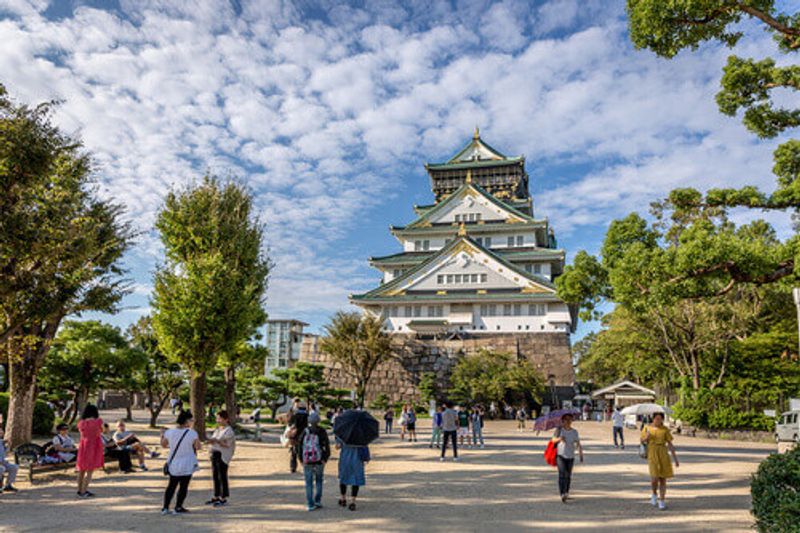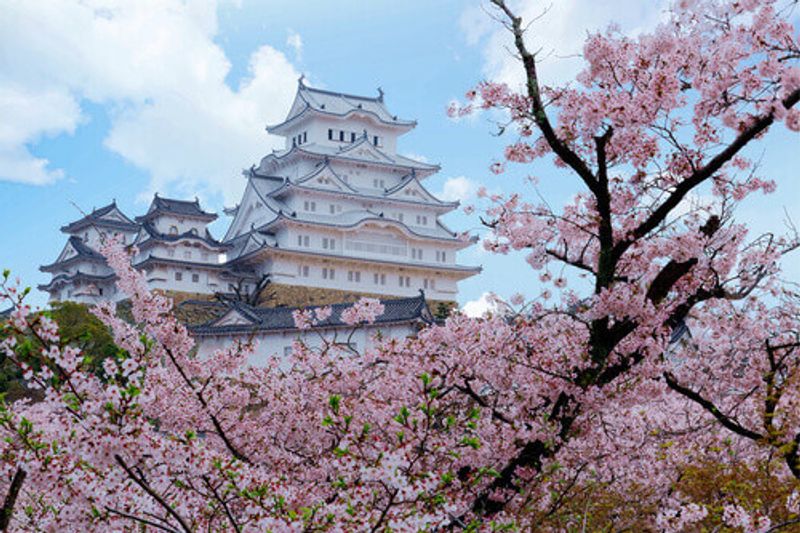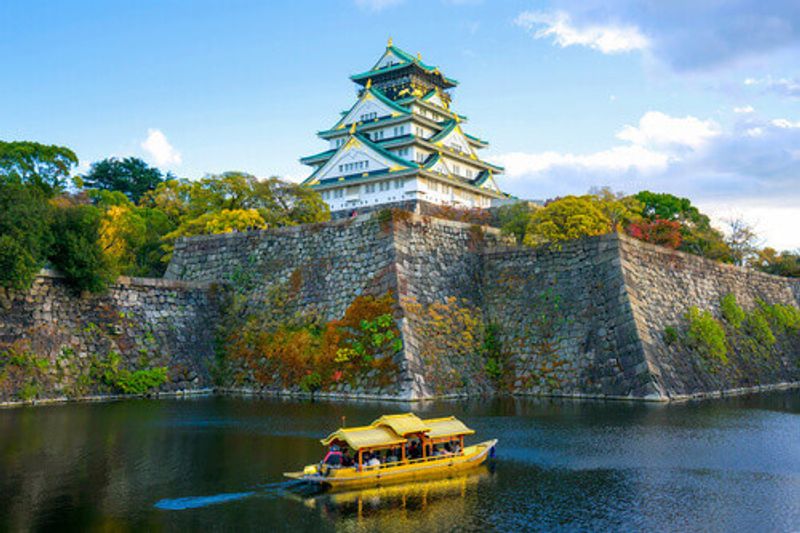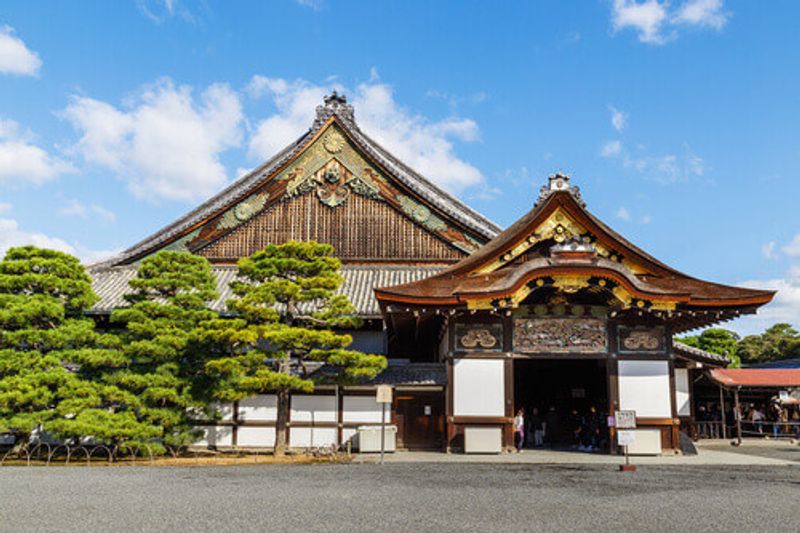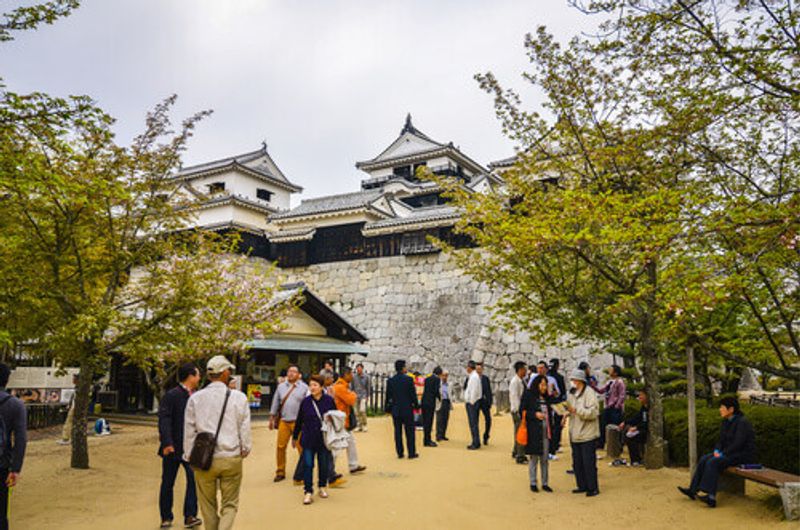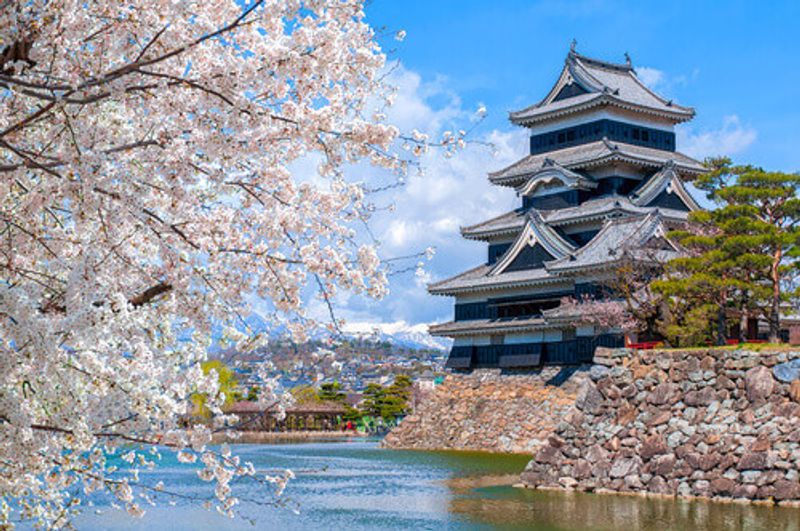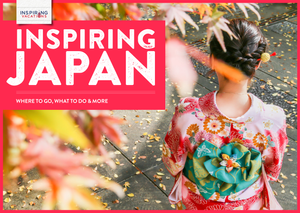For history or architecture buffs, Japanese castles are unmissable
While Japanese fortresses and defensive buildings have been around for centuries, the 16th and 17th centuries were a banner time for feudal-era castles, which formed the defensive heart of many towns, including Tokyo. Many of the remaining Japanese castles have been classified as UNESCO World Heritage sites. The hundred-odd that stand today are enduring examples of the classic Japanese castle shape—one unique factor in constructing these huge complexes is achieving a sense of balance with the surrounding landscape. As a result, there is an air of elegance to Japanese castles that is best exemplified in old yamajiro or mountain castles, which were built into the mountains themselves.
While Japanese castle foundations were usually made with sturdy stone, wooden roof structures and other less-resilient structural details were heavily damaged in subsequent wars, bombings, and natural disasters, including a disturbing number of lightning strikes. This resulted in intensive modern-day restoration efforts. Visiting castles in Japan usually involves a lot of walking, stair-climbing, and even some shoes-off experiences, so be prepared!
Here, some of the best castles in Japan to visit.
Himeji Castle
Arguably Japan’s biggest and most famous castle, Himeji Castle, also known as White Heron Castle, is a striking symbol of beauty in Hyogo prefecture. It no longer resembles its humble origins as a hilltop fort—after years of reconstruction efforts, it achieved its ultimate form in the 1600s, where it has sat untouched by World War II bombings and earthquakes. Five of its structures are considered national treasures of Japan.
Osaka Castle
Originally built in 1583, Osaka Castle was an ambitious project for Hideyoshi Toyotomi, a daimyo (feudal lord) who wished to outdo his rival, Oda Nobunaga. Perched atop a stone-fortified landfill in Osaka's Chūō-ku, the castle’s location originally housed a temple, and endured many interior conflicts, civil wars, and natural disasters. Today, the castle has been beautifully reconstructed and includes some of Japan’s most beautiful parks and gardens, such as the sakura-filled Nishinomaru Garden.
Nijō Castle
Located in Kyoto, Nijō was the home of Tokugawa Ieyasu, the first in a line of powerful Tokugawa shogun who ruled for over 200 years. It is comprised of traditional architectural elements and two palaces: Ninomaru and Honmaru. Ninomaru is still standing, and features some fascinating design elements, such as squeaky, 'chirping' uguisubari floors (nightingale floors) to prevent assassins and spies from sneaking around. Today, Nijō Castle is a UNESCO World Heritage Site and also has a renowned Japanese landscape garden, the Ninomaru Palace Garden.
Matsuyama Castle
Named after a hot spring in Ehime prefecture, Matsuyama Castle has exhibits of feudal-era history, along with samurai-era armour and other relics. It is one of the most intact historic castles of Japan which largely escaped major damage. There’s even a gondola (Matsuyamajo Ropeway) to get to the castle as it’s located on a painfully steep hill—on the upside, it has some incredible views of the Seto Inland Sea.
Matsumoto Castle
Along with Himeji, this is one of Japan’s three iconic 'premier castles' and its main keep or donjon, is a national treasure. Built in the 1500s, this impressive black structure is also known as the 'Crow Castle' (karasu-jo) for its black roof 'wings' and walls. Like many other Japanese castles, Matsumoto is a popular spot during cherry blossom season in April.
